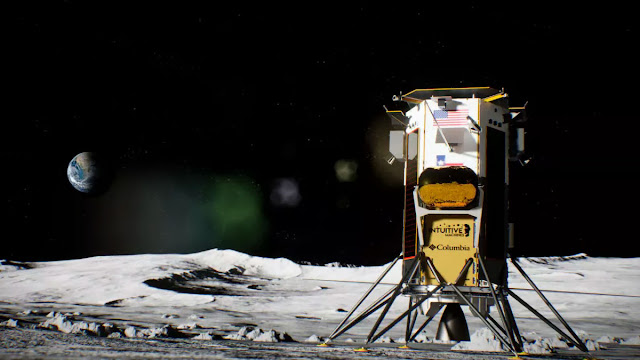(While waiting to see if SpaceX gets off their 9th launch in August...)
The details aren't great. OK, the details are nonexistent but we have before and after photos of an area on the moon that Russia's Roscosmos agency said to look at for changes.
This animated GIF is two photos from NASA's Lunar Reconnaissance Orbiter (LRO) taken on June 27, 2022, and Aug. 24, 2023 – before and after the appearance of a new impact crater likely from Russia’s Luna-25 mission. (Image credit: NASA’s Goddard Space Flight Center/Arizona State University)
There's obviously a new impact crater there that showed up between the first and second photos, and it's reasonable to wonder if it's really from Russia's Luna-25 instead of a random piece of rock. NASA apparently concludes that this sort of change is rare enough that when they find it where Roscosmos told them to look, they believe they found the impact site of Luna-25 and not from a rock.
LRO's handlers went looking for Luna-25's grave, using an estimated impact site provided by Roscosmos, the Russian space agency.
The LRO team imaged the area with the probe's Lunar Reconnaissance Orbiter Camera (LROC) on Aug. 24, then compared the new photos with pictures of the same region captured previously by LROC, most recently in June 2022. This work revealed a bright, fresh crater on the moon that was gouged out in the past 14 months.
"Since this new crater is close to the Luna-25 estimated impact point, the LRO team concludes it is likely to be from that mission, rather than a natural impactor," NASA officials said in a statement today (Aug. 31) announcing the find.
The new crater is about 33 feet wide and lies at about 58 degrees south latitude. The impact site is roughly 250 miles (400 kilometers) from Luna-25's planned landing site, which lies at 69.5 degrees south latitude.
Luna-25 launched on Aug. 10, kicking off the first Russian moon mission since 1976, when the nation was still part of the Soviet Union. The new mission's name was an attempt to recall those proud bygone days; the 1976 effort, a successful sample-return mission, was called Luna-24.
It was said in that linked article that "Luna-25 will kick off a new and ambitious Russian moon program, if all goes according to plan." Since it didn't all go according to plan, I have to wonder how that ambitious thinking gets affected.




























